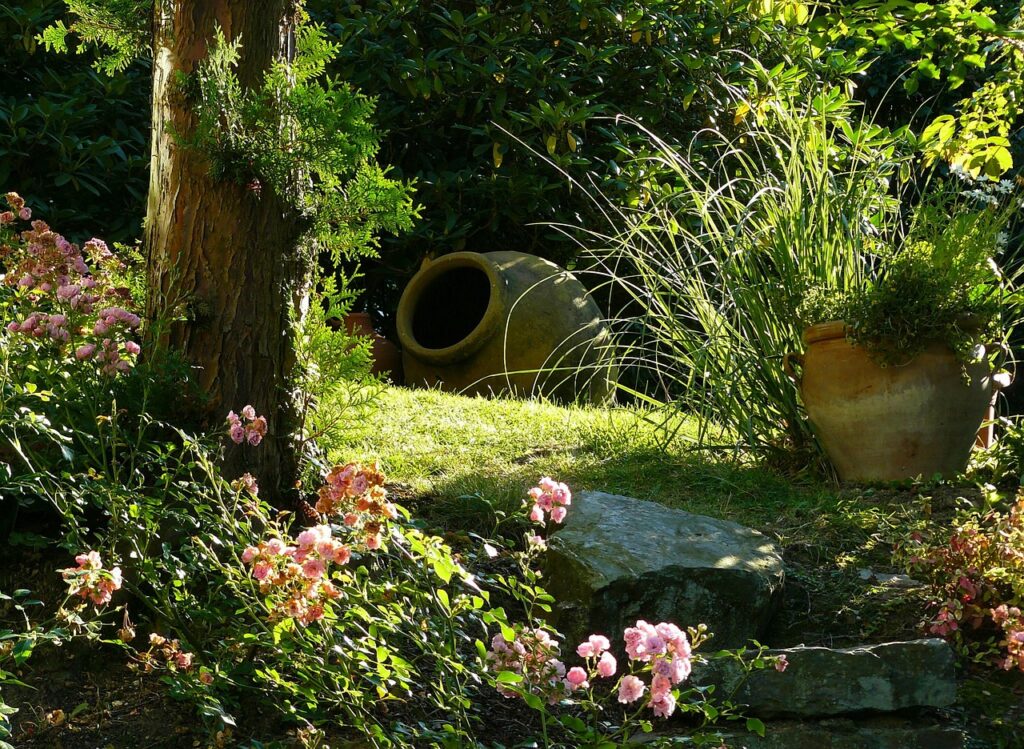In this bustling urban world, biophilic design brings nature into our spaces and is gaining popularity. The power of biophilic design enhances our well-being by incorporating natural elements into buildings, workplaces, and homes.
It creates harmony by weaving greenery, natural light, and organic materials into our surroundings.
The Concept of Biophilic Design
The concept of biophilia, introduced by Edward O. Wilson, suggests that humans have an innate connection with nature. This deep-rooted connection has evolved over thousands of years of living in harmony with the natural world.
This design concept appeals to our inherent connection with nature, offering numerous benefits. Firstly, it reduces stress, as plants and natural elements promote relaxation and calmness.
Moreover, it enhances productivity in workplaces, with greenery and natural light improving focus and creativity. In homes, biophilic design fosters a sense of tranquility and rejuvenation, promoting better mental health.
Additionally, it improves air quality by introducing plants that filter pollutants and release oxygen. It also conserves energy by using natural light and ventilation. It thereby reduces electricity consumption.
Furthermore, it creates spaces that promote physical activity, enhancing our overall health. Incorporating biophilic design in schools can improve students’ learning outcomes and concentration levels.
Furthermore, it fosters a connection with the environment, encouraging eco-friendly behaviors and sustainability. The design principles are applicable to various settings, from architecture to interior design.
Architects integrate natural forms and materials, like wood and stone, into building structures. Interior designers use natural colors and patterns to mimic outdoor environments within indoor spaces.
The design philosophy isn’t limited to aesthetics; it impacts our emotional and psychological well-being. In hospitals, it reduces patient stress and promotes faster recovery through natural elements.
Restaurants and cafes with biophilic elements create more inviting and enjoyable dining experiences. Hotels use biophilic design to offer guests a relaxing and rejuvenating stay, improving customer satisfaction.
Public spaces, like parks and gardens, benefit from biophilic design by providing an urban oasis for relaxation. In today’s urbanized world, we are increasingly disconnected from nature, leading to various health issues.
The principle of Biophilia aims to bridge this gap, allowing us to reap the benefits of our natural connection. One of the main principles of biophilic design is incorporating natural elements, such as plants and water features.
Living walls or green walls bring a touch of nature into urban environments. Water fountains and ponds add a soothing, aquatic element to indoor and outdoor spaces.
Another principle is maximizing natural light, which reduces the need for artificial lighting and connects us to the outside. Large windows, skylights, and light wells bring sunlight deep into buildings, creating a sense of openness.
Natural materials like wood, stone, and bamboo are used for flooring, walls, and furniture, creating an organic ambiance. The use of natural colors and patterns, such as earth tones and leafy motifs, reinforces the connection to nature.
A crucial aspect of the design is providing opportunities for people to interact with nature. Outdoor gardens, indoor planters, and rooftop green spaces offer spaces for relaxation and contemplation.
It encourages the integration of wildlife, such as birds and butterflies, into our environments. Bird feeders, butterfly gardens, and small ponds attract and support local fauna, enriching our surroundings.
Incorporating these principles can have profound effects on our physical and mental well-being. For instance, the presence of plants indoors can improve air quality, reducing the risk of respiratory issues. Indoor plants also increase humidity levels, alleviating dry skin and respiratory discomfort.
Moreover, exposure to natural light regulates our circadian rhythms, improving sleep patterns. It is imperative to note that interacting with nature, even in small ways, can reduce stress, anxiety, and symptoms of depression.
Studies have shown that hospital patients with views of natural landscapes tend to heal faster. Incorporating biophilic design in schools has improved test scores and reduced absenteeism.
In workplaces, it can enhance job satisfaction and decrease employee turnover. Despite the numerous benefits, biophilic design is not yet the norm in modern architecture and interior design.
One reason is the misconception that it’s costly and complicated to implement. However, many biophilic design elements are relatively inexpensive, such as adding potted plants and natural materials.
Another challenge is the lack of awareness and education about biophilic design principles. As Architects, designers, and builders begin to understand the concept’s value and potential.
Regulations and building codes also need to evolve to accommodate biophilic design elements. To promote biophilic design, governments, and organizations should offer incentives and support. Green building certifications, like GRIHA, LEED, can encourage biophilic design practices.
Furthermore, educational programs can train future architects and designers in biophilic principles. Collaboration between architects, psychologists, and biologists can lead to innovative biophilic solutions.
The Future
Understanding the power of biophilic design is not just a trend; it’s a fundamental shift in how we create and interact with our environments. It aligns with the growing awareness of the importance of sustainability and well-being in modern society.
The design ideology is crucial for reconnecting with nature in today’s urbanization. In conclusion, biophilic design benefits our physical, mental, and emotional well-being.
It reconnects us with the natural world, reducing stress, improving productivity, and fostering sustainability. Embracing biophilic design principles can create healthier, more harmonious, and sustainable living spaces.
Let us not forget how nature impacts our lives and strive to bring it back into our daily existence through biophilic design.


